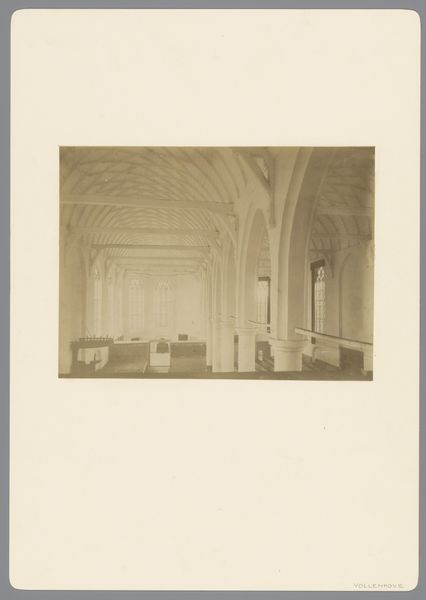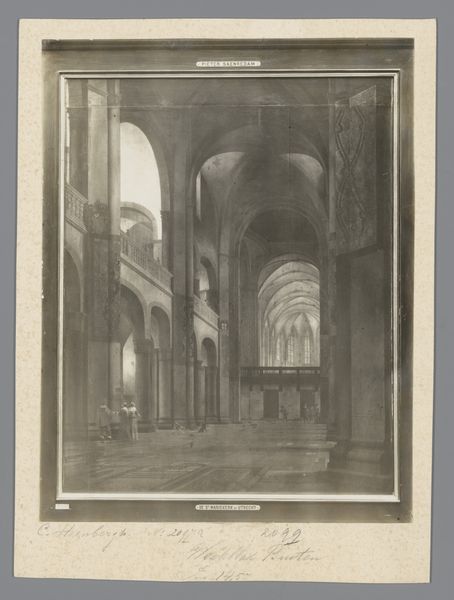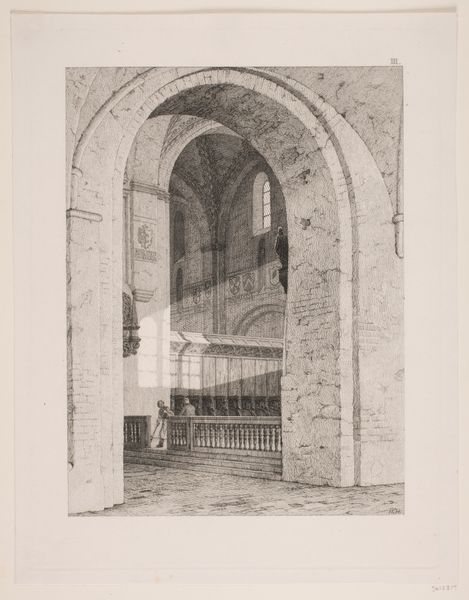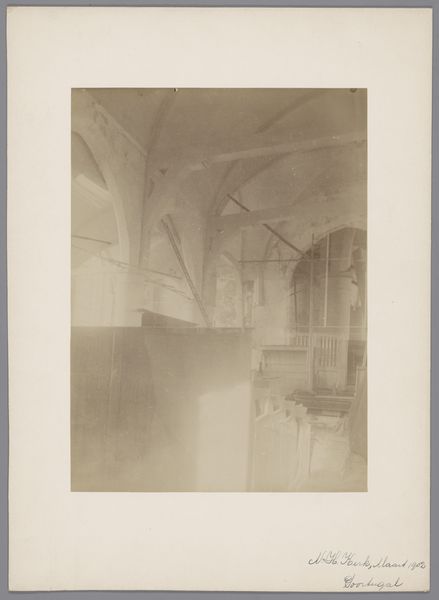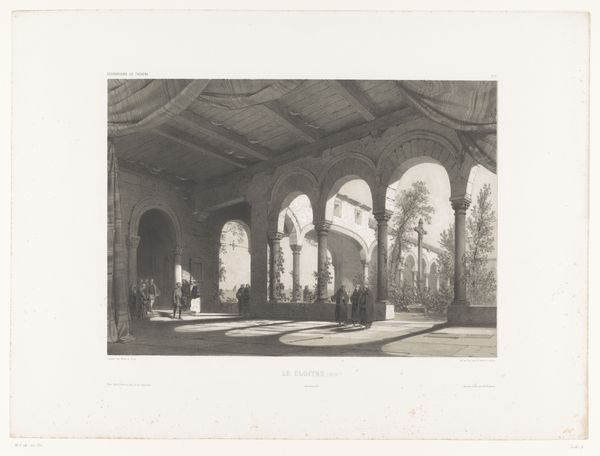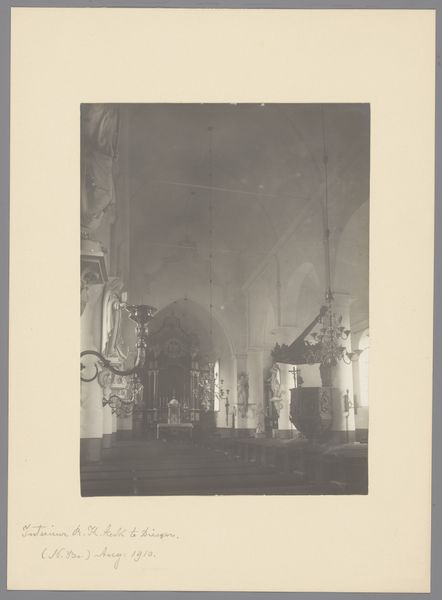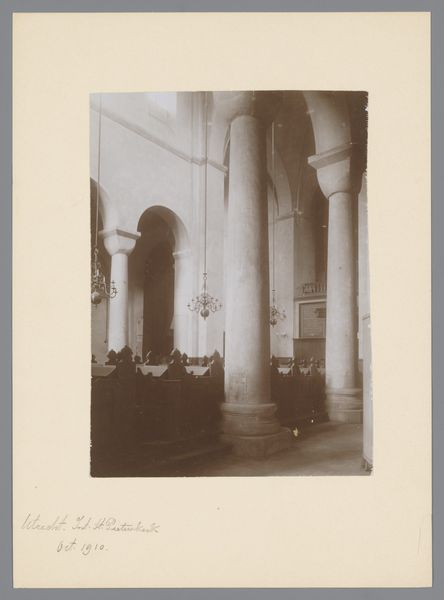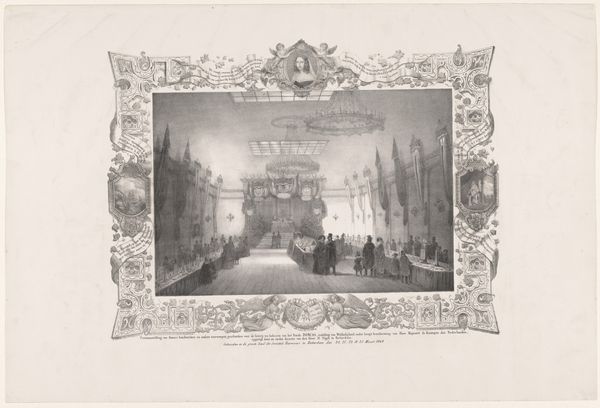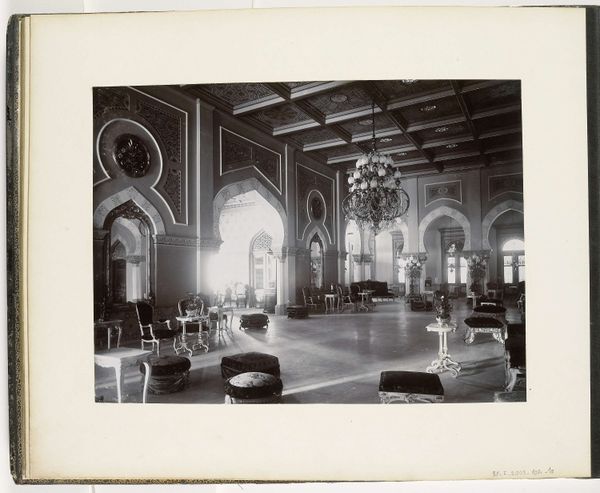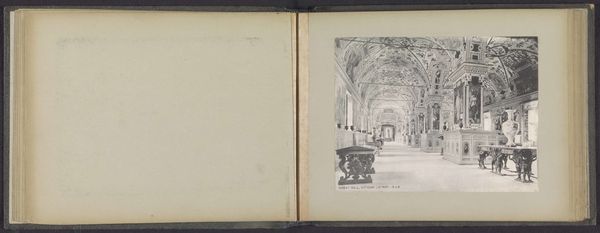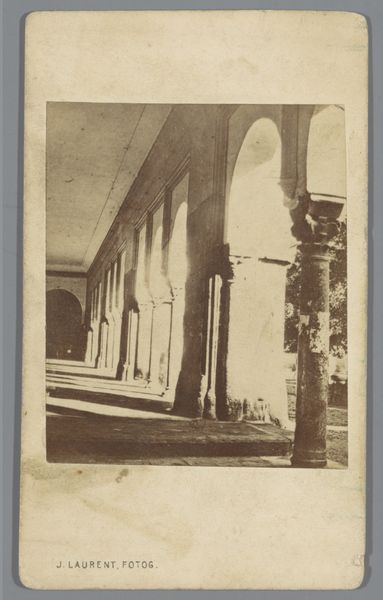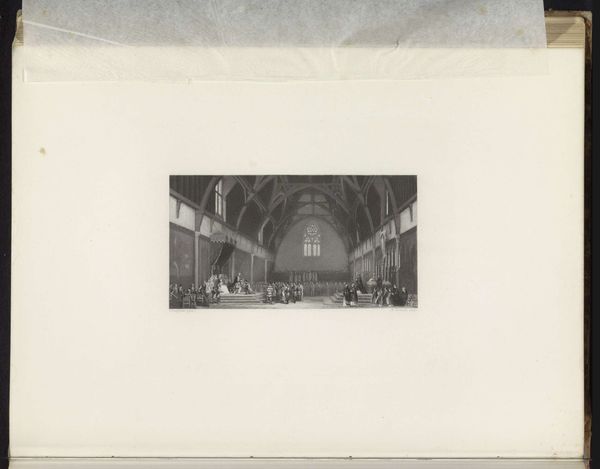
Interieur van de Grote Kerk te Hoorn, vóór de brand op 3 augustus 1838 1838
0:00
0:00
paulusjolly
Rijksmuseum
drawing, print, etching, engraving
#
drawing
#
neoclacissism
#
pale palette
# print
#
etching
#
landscape
#
engraving
Dimensions: height 603 mm, width 479 mm
Copyright: Rijks Museum: Open Domain
Curator: This etching from 1838 by Paulus Jolly is titled "Interior of the Grote Kerk in Hoorn Before the Fire on August 3, 1838." Editor: The somberness of the grey tones emphasizes the looming vastness, a monument frozen just before a catastrophic change. One can't help but focus on what's about to be lost. Curator: It’s incredible to consider that Jolly completed this record of the church mere months before the devastating fire. The cool neoclassicist lines do communicate a sense of order, but also a premonition of impermanence. Notice how the architectonics create an orderly sense of the Divine. Editor: Etching and engraving were really favored for their capacity to mass-produce images; that feels relevant. It ensured this architectural record was disseminated to a broad audience. I can almost feel the laborious process of creating these images. Did Jolly make his own ink or acquire it from elsewhere? And who might be consuming this, and where, considering the moment of great upheaval to come? Curator: A lot to unpack! Let's not forget, the church itself symbolizes far more than the physical structure; for many, the church served as a vessel of spiritual continuity across generations. Jolly captured a communal space before its interruption. Even the play of light, the way it pours in through the high windows, can represent divine presence. Editor: I see your point about light, yet the muted palette almost drains away any sense of vibrancy or intense emotion. Everything feels studied, documented—the act of recording perhaps more important to Jolly than creating an emotional response. I'm still intrigued by the materials of distribution and how printmaking helped make sacred spaces accessible in everyday life. Curator: A final thought is that while capturing material form, Jolly unwittingly preserved something more profound: memory, or what was just about to become it. What looks as a mere depiction suddenly holds a much more meaningful position. Editor: For me, it’s that tangible relationship, not with what's depicted, but with the labor and reach, reminding me that even in religious structures, human effort, and production are core to meaning.
Comments
No comments
Be the first to comment and join the conversation on the ultimate creative platform.

